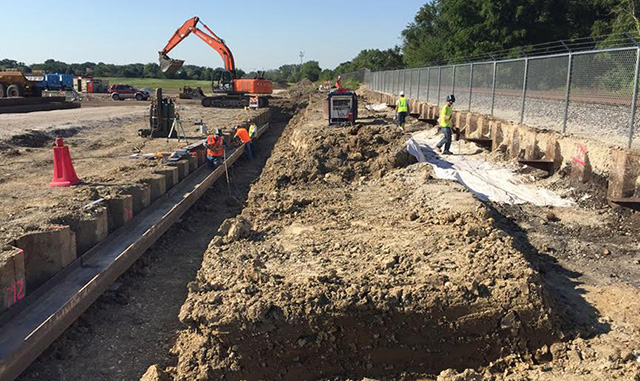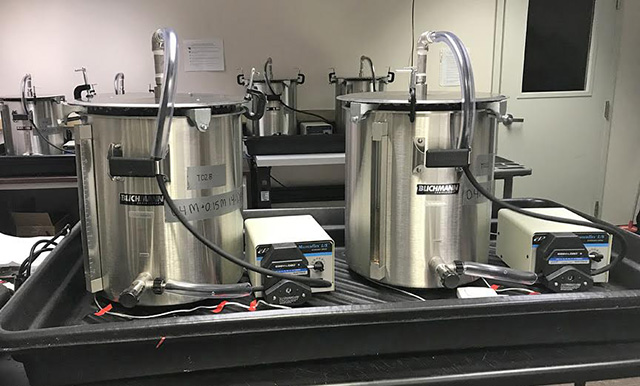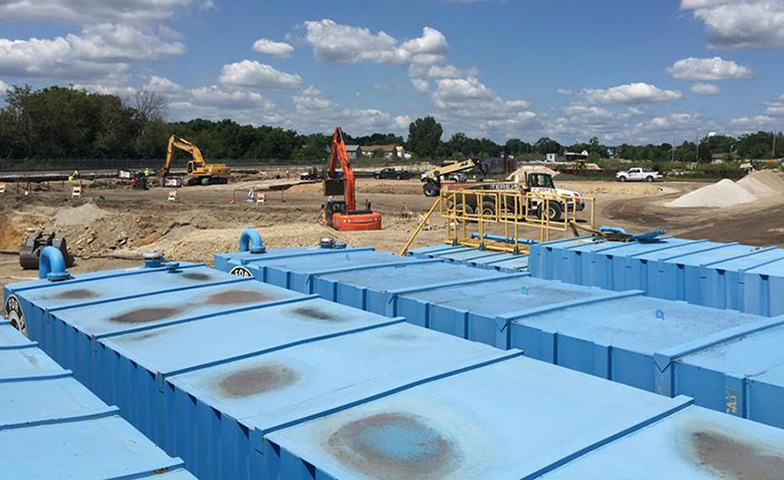Background and Impact
The West Chicago Environmental Response Trust (WCERT) is a U.S. Grantor Trust managed by Weston since 2011. Weston manages this full-service Trust as Trustee, making the program length, success, scope, and forecast for this work among the most exciting Weston projects of 2018.
The WCERT, located in West Chicago, IL, was established to fulfill the environmental obligations of the Tronox, LLC, a former Fortune 500 Corporation. Weston’s foremost objective, as Trustee, is to fully meet the needs of WCERT’s highly engaged beneficiaries/stakeholders, which include the United States Department of Justice (USDOJ), the United States Environmental Protection Agency (USEPA), the State of Illinois, and local communities: the Cities of West Chicago and Warrenville, the DuPage County, and the DuPage County Forest Preserve District. As Trustee, Weston performs all required engineering and construction services, financial services including investment management, real estate asset management services, and other services necessary to manage and operate the WCERT as a beneficiary-centric entity.
WCERT is in the process of managing and closing out the following liabilities:
- Clean closure of the former Rare Earths Facility (REF), as dictated by the radioactive materials license STA-583 issued by the Illinois Emergency Management Agency (IEMA). The former REF in West Chicago, IL extracted thorium, a rare earth element, from monazite sands, which was used in the Manhattan Project and by the DOE. The REF comprises approximately 43 acres and once included 21 production and support buildings. Operations of the REF resulted in significant contamination of soil, groundwater, surrounding neighborhoods, waterways, parks and the City’s sewage treatment facilities with a variety of radionuclides and other contaminants.
- Soil and sediment contamination and subsequent, ecological restoration of areas within the footprint of the Kress Creek Superfund Site, in accordance with the Consent Decree, entered into with the USEPA.
- Soil contamination in residential properties as required by the Unilateral Administrative Order (UAO), issued by the USEPA.
Operations and management of the Trust are complex, and a multitude of skills are key to Weston’s successful, continued long-term stewardship. Since 2011, Weston has excelled in all departments to fulfill its Trustee obligations. Over 5 years, it has clocked 150,000 hours without accidents or lost time.
Stakeholder Engagement
Weston implemented and maintained effective engagement strategies, critical operational, and strategic processes to promote trust and involvement of multiple stakeholders. These efforts have resulted in operational efficiencies, collaboration, deep partnerships, and fully zippered relations. The zippered relationship for the stakeholders, as a whole, has allowed for a smoother acceptance and implementation of our strategic roadmap for comprehensive technical, operations, and financial management, including annual decontamination and decommissioning and environmental remediation plans and budgets, and investment of WCERT funds. Weston also used a team-based and partnering approach to develop decision points/decision logic to guide various WCERT activities.

Technical, Engineering, and Remediation Milestones
Weston successfully performed each of the following activities to fulfill the environmental obligations of the Trust:
- Decommissioned and demolished facilities and structures used for handling radioactive materials. These included an on-site Laboratory Facility, a Rail Loading Facility (RLF) that was used to ship soil and debris contaminated with radium, thorium, and uranium, an on-site full-scale Water Treatment Plant, Common Facilities Area (CF), a Physical Separation Facility (PSF), and support zone structures contaminated with low level radioactive residuals.
- Remediated approximately 75,000 cubic yards (CYs) of radiologically contaminated soils and sediments.
- Excavated, packaged, and shipped, in 300+ railcars, over 35,000 CYs of radiologically contaminated soil to a permitted disposal facility.
- Conducted research and development of an in-situ uranium leaching technology (used in the uranium mining industry) for treating uranium source materials at the REF.

Designed and installed comprehensive shoring and slope stability systems to facilitate surgical excavation of contaminated soil in very close proximity and under Class I railroad tracks.
- Designed and installed a new temporary water treatment plant for treating excavation and groundwater, contaminated with uranium, fluoride, and heavy metals, before discharging the treated water via a force main to an NPDES-permitted outfall. Primary components of the system included an equalization system, a filtration system, a carbon adsorption system, and a chelating resin system.
- Monitored groundwater contamination in multiple stratigraphic units. Contamination included radiological constituents (uranium), thorium, and radon and a number of inorganic constituents.
- Completed comprehensive remediation of radiologically-contaminated soil and sediments and ecological restoration of various reaches of the Kress Creek and west branch of the DuPage River. Since the inception of clean-up activities, over 8 miles of Kress Creek and the West Branch of the DuPage River have been remediated and restored.
- Completed remediation and restoration of over 20 impacted residential properties owned by others.
In order to achieve the preceding milestones, Weston prepared and obtained approval of several plans, including engineering design plans and specifications, permitting and design of a temporary water treatment plan, demolition and decommissioning plans, soil excavation plans, quality assurance/quality control plans, radiation safety plans, water and stormwater management plans, sampling and analysis plans, and a waste management plan.
Financial and Operations Management
As Trustee, we can point to the following financial and operations management achievements:
- Implemented an investment program for WCERT funds to maximize the long-term success of investment efforts.
- Maintained highly accurate and auditable financial records and bank accounts, subject to stakeholder and United States Department of Energy (USDOE) audits.
- Maintained strict internal controls to ensure the continued reliability of accounting systems. Annual financial audits of all WCERT-related financial transactions and accounting controls by the USDOE have led to 100% approval of WCERT’s annual Title X Reimbursement claims.
- Completed all remediation activities under budget and ahead of established schedule.
- Optimized WCERT operations through a reduction in overhead costs.
- Managed risks through stakeholder engagement, stringent QA/QC procedures, competitive bidding, and performance-based contracts.
The success of WCERT exhibits Weston’s core strengths to synchronously bring forward our broad range of services to seamlessly manage this unique entity, established to serve a multitude of stakeholders, and deliver on complex requirements at all levels. We look forward to continued successes and opportunities to innovate, as Trustee for WCERT.
Stay tuned for more updates on WCERT. Planning and implementation activities and associated resource needs are ramping up to accommodate further soil/groundwater remediation efforts for which Weston will continue to confidently scale, implement, and maintain the Trust of the stakeholders.
